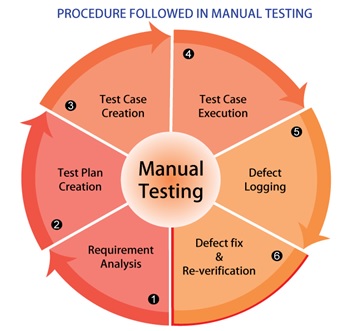


Manual testing is the first stage of testing that is done prior to launching or updating an existing product. It is also known as the primary testing stage as it sets course for the feasibility of automated testing.
Automation is a brainchild of human development. As such, it too suffers from certain restrictions that the human brain could not have thought of. Suffice to say it is impossible to do a 100% automatic testing. In order to make up for this deficit, manual testing is a more reliable tool. Depending on the size of business a company might undertake automated testing once it successfully completes manual testing. You can also check the manual testing checklist here.
Manual testing is always conducted in a set format so as to reduce any chances of overlooking minor details. The 2 most commonly followed steps in manual testing are:
Manual testing is considered to be the least expensive and relatively less time-consuming way of authenticating the specifications and other requirements of the product or software before customer sign off can be gained. This is because automated testing involves the development of a test program which is an expensive task and time-consuming activity. Not only that but developing a test program is also subject to errors that need to be tested and corrected before it can be used.
In the absence of a comprehensive test plan, manual testing can give unreliable results due to human error at the testing stage. Overlooking even a small iota of information can give erratic outcomes. At such times, preference is given to a combination of manual and automated testing.
The point to remember is that no matter whatever course of action you decide to undertake, manual testing is and should be an integral part of your test plan. This is because automated testing follows a set plan and the results are expected within set variables, but manual testing gives that touch of the human element wherein the behaviour of end-user guides the decisions. To eliminate manual testing is to one's own peril. After all, the reputation of your company and the success of your product depend on it.
What makes manual testing different from automation testing is mentioned in our next article. Click the link Automation vs. Manual Testing to know the differences.
Advertisement: